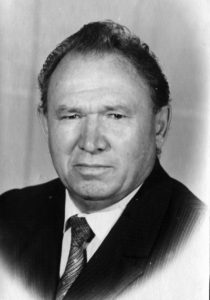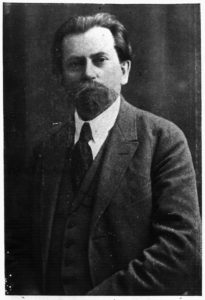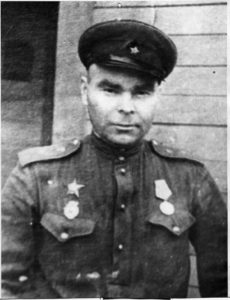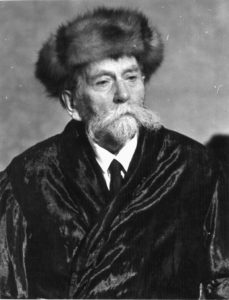The history of the Kazakh Scientific Research Veterinary Institute
The history of the creation of the Kazakh Scientific Research Veterinary Institute is connected with the city of Orenburg. Orenburg, founded in 1735 on the initiative of Khan Abulkhair, has been one of the largest trade, cultural and political centers of Kazakhstan for many decades. Since the formation of the Kazakh Soviet statehood, for 5 years (1920-1925), Orenburg was the first official capital of the Kazakh Autonomous Soviet Socialist Republic, where governmental institutions of our state worked, carrying out effective management of the national autonomy.
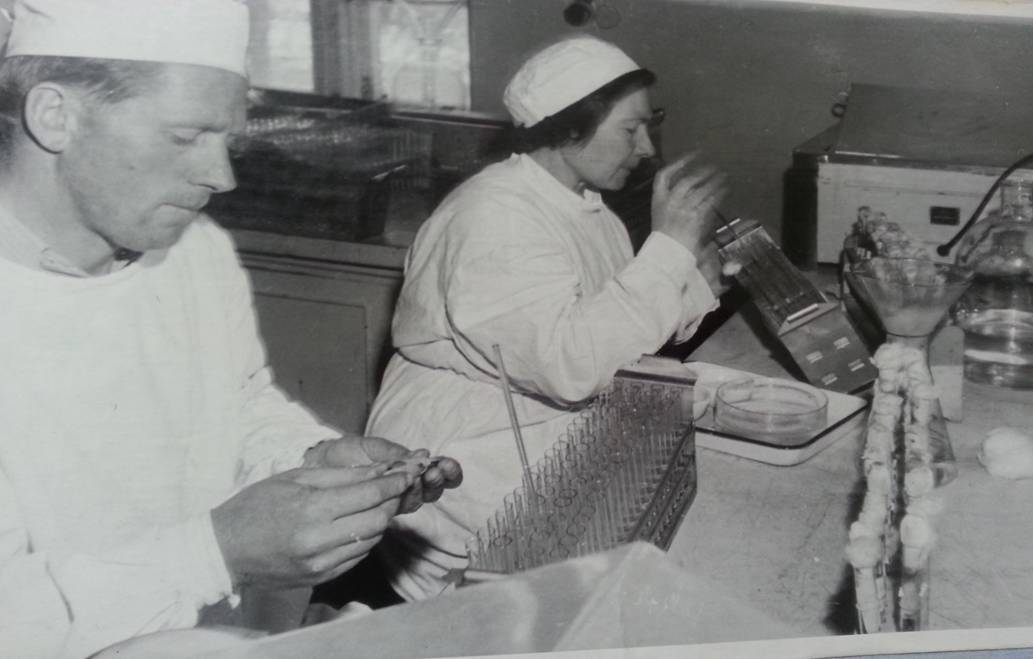
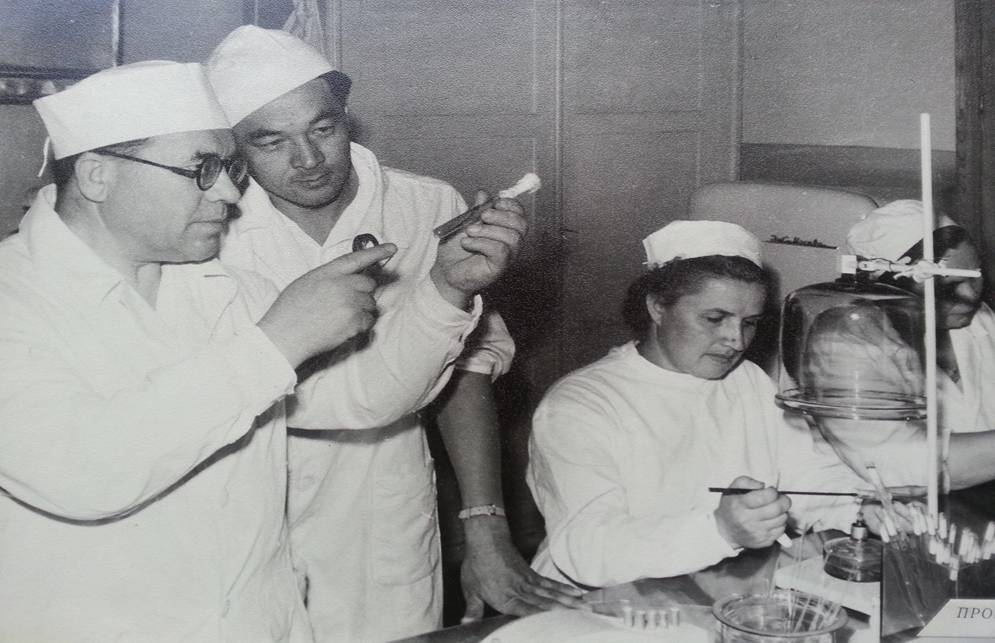
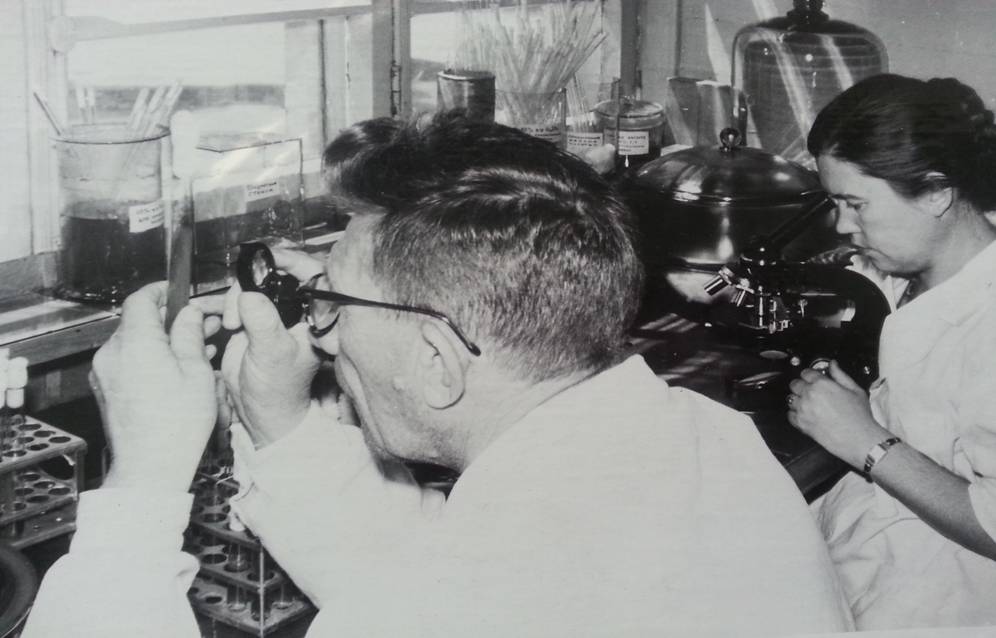
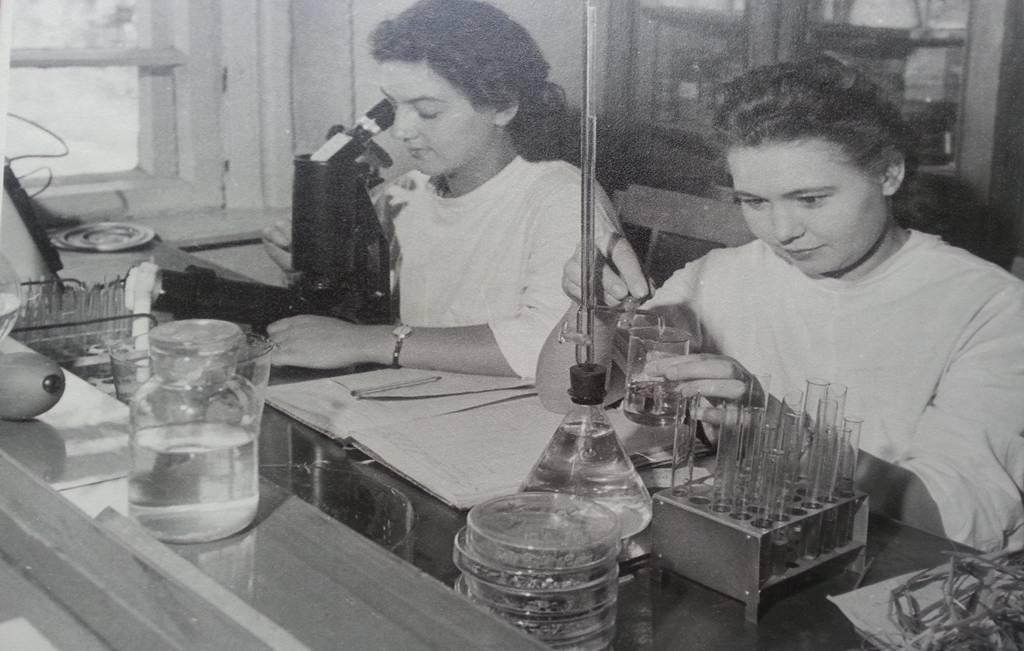
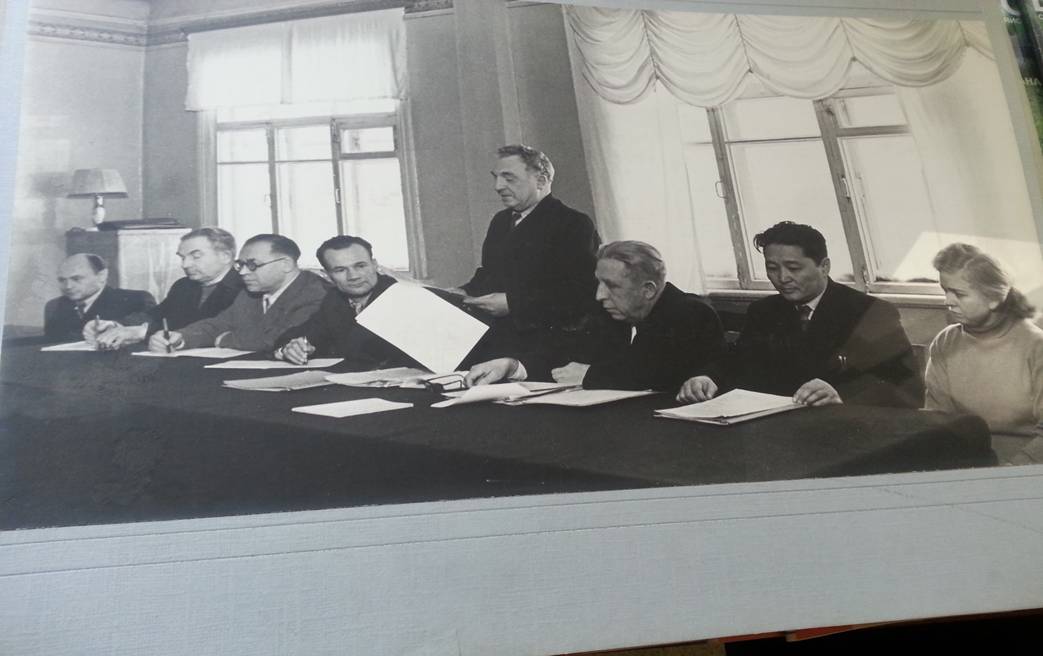
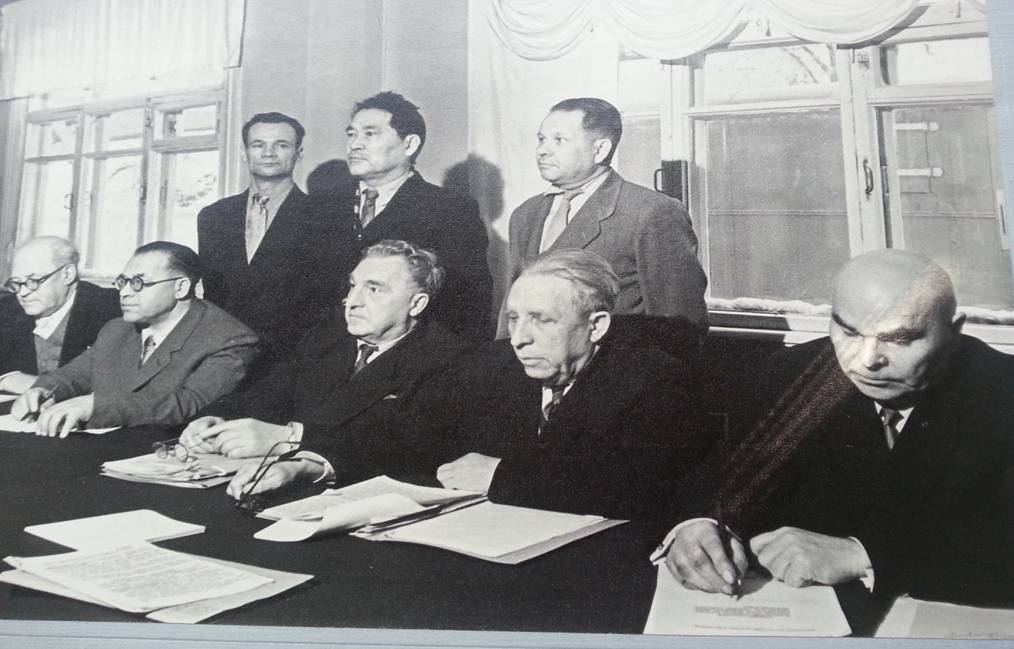
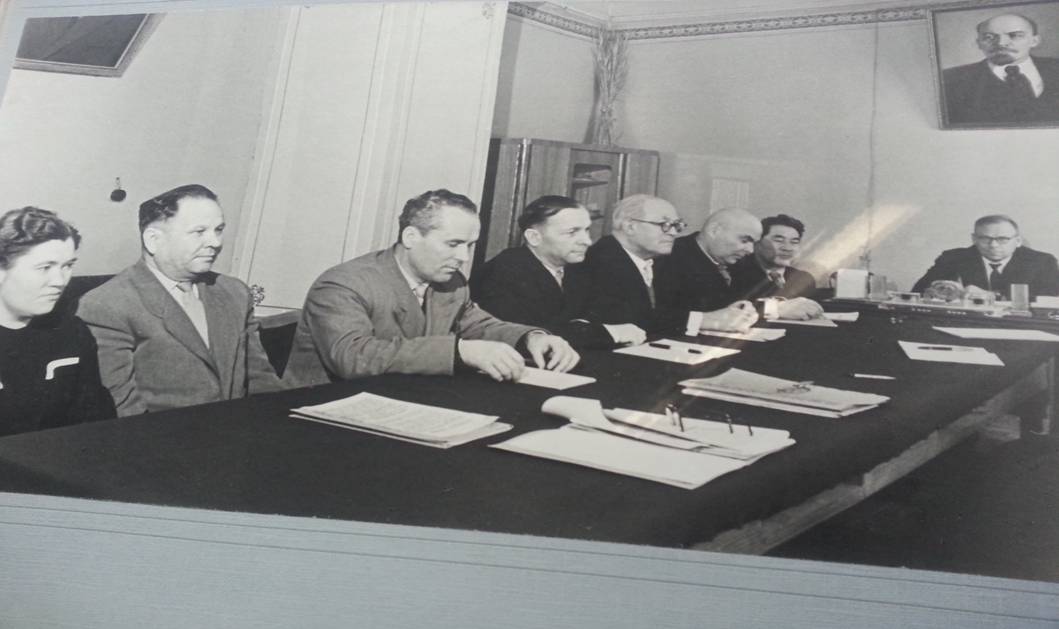
In the late XIX – early XX centuries, the epizootic situation in the Orenburg province and the adjacent Kazakh steppe was very difficult. The small number of veterinary staff and the low level of veterinary knowledge of the population created favorable conditions for the spread of epizootics of horse saps, bovine plague, anthrax, widespread pneumonia (peripneumonia) of cattle, aphthous fever, rabies and other particularly dangerous infectious animal diseases. All this hindered the development of animal husbandry in the region




















Until 1894, there were no full-time veterinary specialists in Orenburg. In 1894, E.F. Baranovsky was appointed the first city veterinarian, and on October 5, 1895, he was replaced by M.A. Tsaregradsky, who proved himself a talented specialist in the organization of veterinary business. So, already at the end of December 1895, on the initiative of M.A. the city authorities of Orenburg, with the assistance of the head of the veterinary department of the Orenburg province Zakkis, opened a microscopic station, which began to carry out veterinary and sanitary examination of meat and meat products, as well as raw materials of animal origin. In addition to other duties, the city veterinarian M.A. Tsaregradsky was also entrusted with the management of the microscopic station






















Taking into account the great organizational abilities of the head of the station, M.A. Tsaregradsky, the Veterinary Department of the Ministry of Internal Affairs of Russia in April 1904 transferred him to the position of assistant to the Tersk regional veterinary inspector. After the transfer of M.A. Tsaregradsky, the city veterinarian Peter Alekseevich Brodov was appointed to the vacant position of head of the microscopic station.
The devastating epizootics that raged in the region at the beginning of the twentieth century forced the Orenburg Provincial Committee to make great efforts to combat the mass death of livestock. Guided by the law of June 12, 1902 “Rules on veterinary and police measures to prevent infectious and widespread diseases on animals and to neutralize raw animal products” and on the recommendation of the newly appointed provincial veterinarian Alexander Ignatievich Zenkevich, the Committee decided to increase the number of veterinary personnel, improve the social situation of veterinary specialists and conduct unified coordination of all veterinary activities in the region, both civil and military in nature.
The fight against widespread livestock diseases required centralized veterinary research in the region and the establishment of production of biological drugs against the most common infectious animal diseases. In these conditions, the issue of establishing a veterinary and bacteriological laboratory in the province arose acutely. Finally, in 1905, the provincial veterinary and bacteriological laboratory was opened in the city of Orenburg, with an annual budget of 600 rubles. All funding during 1905-1907 was directed to the purchase of equipment for the veterinary and bacteriological laboratory and the payment of an internship for its head in the laboratories of Samara, Kharkov and St. Petersburg.
The provincial Veterinary and Bacteriological Laboratory did not have its own building and at first was located in one of the rooms of the microscopic station. The microscopic station itself was located on the equestrian square of the city of Orenburg. The station was located in a building consisting of five rooms, which were divided into an office, a laboratory with an isolated room for bacteriological work, an office of the head, a hygiene room and a security room. The work of the station, and since 1905, the veterinary and bacteriological laboratory, continued to be headed by the city veterinarian P.A. Brodov. In addition, the laboratory staff included the city veterinarian N.A. Ivanov, one “microscopist” and three veterinary paramedics.
A meeting of veterinarians of the Orenburg province and Turgai region, held in Orenburg in March 1908, set the provincial veterinary and bacteriological laboratory tasks for the early development of the production of anthrax vaccines, culture of widespread pneumonia, smallpox detritus, virus for the extermination of harmful rodents, as well as the study of the etiology of infectious and parasitic diseases of farm animals.
In 1909, at the regional veterinary congress in Saratov, veterinary specialists and representatives of several provinces and regions of the Euro-Asian part of Russia decided to open on the basis of one of the large veterinary and bacteriological laboratories “Institute of Experimental Veterinary Medicine in the south-east of Russia”, using the example of bacteriological institutes existing at that time in Kharkov, Kiev and St. Petersburg.
The interests of the Kazakh steppe at this congress were represented by the punctual veterinarian of the Orenburg province Bronislav Iosifovich Dmokhovsky and the Ural regional veterinary inspector Peter Vasilyevich Arkhangelsky.
The Congress recognized Saratov as the most appropriate place for the establishment of the “Institute of Experimental Veterinary Medicine in the south-east of Russia”, since there were many scientific institutions and a university in it. However, the institute in the city of Saratov was never established.
Since 1913, the Orenburg Provincial Zemstvo Council has set the task of expanding the research base of its Veterinary and Bacteriological Laboratory and rented for this purpose a two-story mansion with outbuildings on Essenskaya Street No. 14, owned by Mrs. Yadgarova, for this purpose as a laboratory. In addition, the head of the laboratory, at that time the veterinary physician Clientov, raised the issue of necessity to build a special building of his own for the Veterinary and Bacteriological Laboratory of the Orenburg Provincial Zemstvo.
It is interesting to note that over the 10 years of its existence, the annual allocations of the laboratory from the Orenburg Provincial Zemstvo Board increased more than 18 times and amounted to an impressive amount at that time – 11,300 rubles by 1914.
The importance of the research and production work carried out by the Veterinary and Bacteriological Laboratory of the Orenburg Provincial Zemstvo increased markedly by 1915 and its head was included in the Provincial Sanitary Council to solve urgent problems of a medical, sanitary and epidemiological nature on a provincial scale.
The unprecedented economic crisis in Russia and the subsequent revolutions of 1917 led the Kazakh Region to complete economic ruin. After the acquisition of Soviet statehood in 1920, Kazakhstan continued to be an economically backward republic. This could not but affect the work of the Veterinary and Bacteriological Laboratory in the city of Orenburg (which by that time had become the official capital of the newly formed autonomous republic).
The capital status of Orenburg allowed the Veterinary Department of the People’s Commissariat of Agriculture of the KASSR to rename the Veterinary and Bacteriological Laboratory into the Central Veterinary and Bacteriological Laboratory in the early 20s. This made it possible to consolidate the efforts of all veterinary and bacteriological institutions in the republic and solve the problems of veterinary practice more quickly.
The Central Veterinary and Bacteriological Laboratory of the People’s Commissariat of Agriculture of the KASSR was headed by veterinarian A.A. Chernyarov until 1922. The exact date of appointment of A.A. Chernyorov as head of the laboratory is unknown, the assessment of his activities is very contradictory: in an essay on the history of veterinary medicine dedicated to the 10th anniversary of the Bolshevik Revolution, the head of the Veterinary Department of the People’s Commissariat of the RSFSR A.V. Nedachin writes that veterinarian A.A. Chernyorov, as one of the experienced specialists, was a member of the board of veterinary Management The Ministry of Internal Affairs of Russia in April 1917. At the same time, it should also be noted that on February 23, 1922, the inspector of the People’s Commissariat of the Workers’ and Peasants’ Inspection of the KASSR gave an opinion on the materials of the audit of the Central Veterinary and Bacteriological Laboratory of Kaznarkomzem, in which it was proposed that the former head A.A. Chernyarov be held accountable for the collapse of the laboratory. At the same time, the conclusion emphasized that the allocation of funds to the laboratory by the state was carried out “extremely poorly” and this also contributed to the unsatisfactory work of the veterinary institution.
In 1923, the Central Veterinary and Bacteriological Laboratory was once again renamed the Regional Veterinary and Bacteriological Laboratory. In the same years, the laboratory continued to produce hundreds of thousands of doses of inoculation material for the needs of veterinary medicine in Kazakhstan: I and II Tsenkovsky vaccines against animal anthrax, vaccine cultures of pathogens of porcine erysipelas and bovine peripneumonia, as well as a culture of bacteria for the extermination of rodents (the specified virulent strain of the causative agent of infection that caused the mass death of pest animals, up to still unknown to veterinary science). In addition, the laboratory produced serums against porcine erysipelas, animal anthrax and avian cholera (pasteurelsis). In the work of the Regional Veterinary and Bacteriological Laboratory, much attention was also paid to the diagnosis of particularly dangerous infectious diseases of farm animals, while thousands of different bacteriological studies were carried out annually.
At the beginning of 1923, veterinarian Yevgeny Mikhailovich Rafalovich was appointed to the position of head of the Regional Veterinary and Bacteriological Laboratory
At the initiative of the Veterinary Department of the People’s Commissariat of Agriculture of the Kazakh Autonomous Soviet Socialist Republic, the issue of converting the Regional Veterinary and Bacteriological Laboratory into the Kazakh Regional Veterinary and Bacteriological Institute has been repeatedly raised. In late 1924 – early 1925, a draft regulation on the Regional Veterinary and Bacteriological Institute was prepared and reviewed by the Board of the Kaznarkomzem and the Kaznarkomust, approved mainly by these commissariats and submitted for consideration to the Council of People’s Commissars of the KASSR.
Based on the prepared materials and the state tasks facing the People’s Commissariat of CASSR, on April 7, 1925, the Kazakh Central Executive Committee based on resolution (Protocol No. 39) The Regional Veterinary and Bacteriological Laboratory was transformed into the Kazakh Regional Veterinary and Bacteriological Institute, obliging the named commissariat to prepare a regulation on the newly organized institute for approval by the Government of the republic. Despite many obstacles in coordinating the text of the draft regulations and staff of the institute with the People’s Commissariats, with minor amendments, it was approved on May 16, 1925 by Resolution No. 23 (4926) of the Council of People’s Commissars of the KASSR. A lot of efforts were made to transform the laboratory into an institute by the head of the Veterinary Department of Kaznarkomzema F.M.Kuzmin-Terentyev and the head of the laboratory E.M. Rafalovich
As a result of the national-state demarcation of Central Asia and Russia in 1924-1925, the unification of the Kazakh lands into a single Kazakh Soviet state was completed. In the second half of 1925, the capital of KASSR was completely moved from Orenburg to Kyzyl-Orda.
With the transfer of the capital, the question arose about moving from Orenburg to Kyzyl-Orda, along with other state institutions, the Kazakh Regional Veterinary and Bacteriological Institute. For this purpose, the construction of a new building of the institute was started in Kyzyl-Orda.
On December 10, 1925, the grand opening of the Regional Veterinary and Bacteriological Institute took place in a new, still unfinished building, the construction of which was completed only by the autumn of 1926. The meeting was opened by the People’s Commissar of Agriculture of the KASSR (Kazakh Autonomous Soviet Socialist Republic) Aliaskar Mendiarovich Alibekov. Then the speech was given to the head of the Institute, E.M. Rafalovich, who read a report on the history of the formation of the Kazakh Regional Veterinary and Bacteriological Institute. Nygmat Nurmakov, Chairman of the Council of People’s Commissars of the KASSR, delivered a welcoming speech on the occasion of the opening of the institute. In his speech, he emphasized that during his short stay in Kyzyl-Orda, the government of Kazakhstan has already opened the first two research institutions: Medical and Veterinary Bacteriological Institutes, which are designed to be not only centers of science, but also culture. At the same meeting, they read the resolution of the Presidium of the Kazakh Central Executive Committee No. 20 dated December 9, 1925 on the approval of the head of the Institute E.M. Rafalovich “as Director of the Regional Veterinary and Bacteriological Institute of Kaznarkomzem”.
After the opening of the institute in Kyzyl-Orda, its activities were resumed in a short time and the production of biological preparations was mastered, which fully met the needs of practical veterinary medicine in Kazakhstan in vaccinations and diagnostic tools.
In 1928, the government of the republic began active work on the transfer of the capital from Kyzyl-Orda to Alma-Ata. The Regional Veterinary and Bacteriological Institute was also among the moving state institutions. It was decided that before the construction of a new building in Alma-Ata, the institute would be temporarily based in Kyzyl-Orda.
On the night of August 18-19, 1928, a fire broke out in the institute building, destroying most of the laboratory equipment. After this event, the question of the immediate evacuation of the Institute’s staff to Alma-Ata has now arisen.
By Resolution No. 37 of the Council of People’s Commissars of the KASSR dated September 5, 1928, it was decided to transfer the Regional Veterinary and Bacteriological Institute to the city of Alma-Ata. The resumption of the Institute’s work in Alma-Ata was entrusted to E.M. Rafalovich, Nikolai Vasilyevich Badanin and Seifulla Bayazitov. At the same time, the Alma-Ata veterinary and bacteriological office with all the equipment and staff was transferred to the Regional Veterinary and Bacteriological Institute.
According to the decree of the government commission for the placement of regional institutions in Alma-Ata, the Regional Veterinary and Bacteriological Institute was allocated premises located on the corner of Torgovaya and Pushkinskaya Streets, in the building of the former Lushnikov Trading House.
In the second half of 1929, E.M. Rafalovich, together with famous scientists-parasitologists K.I. Scryabin, E.N. Pavlovsky and V.L. Yakimov, took an active part in the Tashkent Scientific Congress devoted to the study of tropical and invasive diseases of domestic animals in Central Asia, with a report “The results of the work of the Veterinary Institute of the NKZema of Kazakhstan on protozoan and invasive diseases of domestic animals and their vectors”. In the same years, the director of the Kazakh Regional Veterinary and Bacteriological Institute E.M. Rafalovich was subjected to unjustified persecution by the Bolshevik authorities, in all likelihood, this was the reason why he left the post of director of the Institute. Subsequently, E.M. Rafalovich, having joined the Turkmen Agricultural Institute, prepared and successfully defended his doctoral dissertation on the topic “Experimental trypanosomiasis of donkeys and mules” at the RESE.
In the first half of 1931, Gleb Petrovich Bychkov, a veterinarian with extensive work experience, who was assistant director of the Institute under E.M. Rafalovich, was appointed acting director of the Regional Veterinary and Bacteriological Institute. In March 1932, G.P. Bychkov was dismissed from the post of acting director of the Institute.
On March 22, 1932, Alexander Andreevich Ivanov, a graduate of the Alma-Ata Veterinary Institute, was appointed director of the Regional Veterinary and Bacteriological Institute. It is incredible that, as a university student in 1930-1932, A.A. Ivanov simultaneously served as deputy director of the Regional Veterinary and Bacteriological Institute.
On June 24, 1931, the Veterinary Sector of the KAZNARKOM sent a world-renowned veterinary scientist Sergey Nikolaevich Vyshelessky, who was in administrative exile during these years, for employment at the Regional Veterinary and Bacteriological Institute. Professor S.N. Vyshelessky was appointed scientific director of the Institute for Infectious Diseases of domestic animals and worked there until April 7, 1933. The director of the Institute, A.A. Ivanov, in his certificate addressed to S.N. Vyshelessky, thanked him and pointed out that the professor, following the results of his two-year work, was awarded for his contribution to the achievements of SRVI.
According to the order of the People’s Commissariat of the USSR dated August 26, 1934 No. 83701 on the reorganization of the network of veterinary research institutions and on the basis of the Resolution of the Council of People’s Commissars of KazASSR dated February 1, 1935 No. 175, the institute was reorganized into the Kazakh Scientific Research Veterinary Experimental Station.
In the absence of the head of the Veterinary Department of the People’s Commissariat of KazASSR, his position was assigned to the director of the Institute, A.A. Ivanov, with the right to dispose of management loans.
Despite the economic difficulties, under the direct supervision of the director of the Institute A.A. Ivanov, in 1936 the first fundamental volume of the works of the Kazakh Regional Scientific Research Veterinary Institute was published, with a circulation of 1000 copies.
The massive Bolshevik repressions of the late 30s also affected the staff of the institute, leaving an indelible tragic mark. So, unexpectedly, the director of the Institute, A.A. Ivanov, was dismissed from his post. On October 3, 1936, veterinarian Semyon Tikhonovich Povetkin was appointed to his position by the decision of the Bureau of the Kazkraikom of the CPSU (b). Most likely, at the end of October 1936, A.A. Ivanov was arrested by the NKVD. On February 28, 1938, by the verdict of the Military Collegium of the Supreme Court of the USSR, A.A. Ivanov was shot.
At the end of 1937, S.T. Povetkin was dismissed from the post of director of the Institute. By Order of the NKZ of the Kazakh SSR No. 2149 dated November 5, 1937, veterinarian Sergey Kuzmich Kozhakin was appointed acting director of the Kazakh Scientific Research Veterinary Experimental Station, and since January 14, 1939, S.K. Kozhakin was confirmed as director of the named experimental station.
On January 19, 1940, the Resolution of the Council of People’s Commissars of the Kazakh SSR and the Central Committee of the KP(b) of Kazakhstan No. 805/b was issued on the reorganization of the Kazakh Scientific Research Veterinary Experimental Station into the Kazakh Scientific Research Veterinary Institute, under this name the institute carries out its activities on scientific support of veterinary medicine in Kazakhstan at the present time.
The main scientific directions in the activities of KazSRVI in the 50s and 60s. The 20th century has always been determined by the demands of animal husbandry. Taking into account the emerging epizootic situation, a thematic research plan was formed, the structure of scientific departments was changed in accordance with it, and often difficult problems of providing new subjects with personnel, production facilities, equipment, and materials were solved.
The Institute’s staff studied the resistance of viruses in the external environment, and developed a method for directional modification of the antigenic structure of viruses.
A concentrated aluminum hydroxide vaccine against bovine foot-and-mouth disease was developed and introduced into production, production of the bivalent KazSRVI vaccine from lapinized aphthous fever virus was started, a method for manufacturing nutrient media from soy and pea hydrolysates for growing cell cultures and aphthous fever virus was developed.
KazSRVI scientists made a significant contribution to solving scientific problems of combating animal rabies (1958-1974), swine fever (1967), infectious atrophic rhinitis of piglets (1970), viral diarrhea (1965-1974) and bovine leukemia.
At the same time, large-scale scientific and industrial work was carried out by scientists of the Institute to solve the problems of prevention brucellosis and tuberculosis.
This period is also associated with the beginning of the formation of foci of mass destruction of farm animals, especially cattle, with tuberculosis, which had previously been diagnosed only in isolated cases. By the end of the 70s, brucellosis and tuberculosis had spread widely among farm animals of the republic, became a powerful brake on the development of animal husbandry and a source of social danger. In this regard, in 1974, a specialized laboratory for the study of animal tuberculosis was organized at the Institute.
The Institute expanded and deepened its complexity in solving the problems of brucellosis and tuberculosis of animals, as a result, a great contribution was made to solving a number of scientific issues, as well as to organizing recreational activities in the farms of the republic.
In 1971, next to the first building of the Institute built in 1935, construction began on a new fundamental three-storey KazSRVI building, which was completed in July 1977. Laboratory equipment, mainly of Polish production, was brought to the new building, which was mastered in a short time and significantly improved the quality of research performed.
As a result, already in the early 90s, it was possible to stabilize and then dramatically improve the epizootic situation: by 1994, the number of points with brucellosis problems was reduced from 1,135 to 263, the incidence from 4.0% to 0.5%, for tuberculosis, respectively, from 1,038 to 208 and from 3.9% to 0.4%.
In animal tuberculosis, work was carried out to determine the effectiveness of an inanimate vaccine compared to the BCG vaccine, manufacture and test an experimental series of tuberculin, and study the obtained KazSRVI anti-tuberculosis vaccine in production experiments.
In the fight against brucellosis, tuberculosis and other diseases, the developments of the scientists of the Institute were used in the form of highly effective diagnostic drugs: color antigen for lamellar agglutination reaction, brucello-ovin, erythrocyte antibody diagnosticum for brucella indication, vaccine from the Rev-1 strain, inanimate anti-brucellosis vaccine KazSRVI, antigen for ring reaction with milk and many others.
By the mid-90s, the Institute had thoroughly studied the species composition of helminths of farm animals, especially sheep, the regional epizootology of the most dangerous helminthioses, developed and offered effective means and methods of their prevention and therapy to production. Thanks to these developments, both epizootic moniesiosis of farm animals, habertiosis and fascioliasis of animals, dictyoculosis and hemonchosis of sheep and goats were eliminated in Kazakhstan. The incidence of echinococcosis, cenurosis, cysticercosis and other helminthiasis in farm animals has been significantly reduced, thereby reducing the economic losses they cause to livestock, the institute has developed a kit for diagnosing toxoplasmosis and toxoplasmosis carrier among animals.
Urgent tasks were solved to improve the safety of young farm animals and the prevention of gastrointestinal infections of viral and bacterial etiology.
The technology of manufacturing an inactivated vaccine against chlamydial abortion among cattle and sheep was being developed.
Research was conducted on the development of technology for the manufacture of diagnostics of leukemia, foot-and-mouth disease and measures to combat spongiform encephalopathy in cattle.
During the years of independence of the Republic of Kazakhstan (1991 – 2015), the Institute’s staff has completed an extensive list of works of scientific and practical importance on the problems of diseases of young farm animals of viral, bacterial and non-infectious etiology, listeriosis, chlamydia, campylobacteriosis of animals, horse strangles and pasteurellosis, diseases of birds and bees, the creation of associated vaccines, the dynamism of biochemical indicators and the immunological status of the animal body.
It should be noted that during the entire existence of the institute, the modernization of laboratories was carried out only twice, in 1977, when a new 3-storey KazSRVI building was built and in 2012, when the Ministry of Agriculture of the Republic of Kazakhstan allocated more than 1 billion tenge for major repairs and purchase of modern laboratory equipment under the program “Creation of a unified laboratory network”, meeting international standards.
Today, the Kazakh Research Institute with 6 branches in all regions of the republic is one of the leading scientific institutions in the country. The Institute has laboratories equipped with modern equipment, a new vivarium for keeping and rearing laboratory animals, a chlorination plant for wastewater disinfection, and a recycling plant for burning bio-waste.
The material and technical base of scientific departments meets quality standards and allows for conducting scientific research in veterinary medicine in accordance with international standards.
For the period from 2010 to 2022, the Institute was headed by Doctor of Veterinary Sciences, Professor, Honorary member of the National Academy of Sciences of the Republic of Kazakhstan, Academician of the Academy of Agricultural Sciences of the Republic of Kazakhstan Sultanov Akhmetzhan Akievich.
Under his leadership, for the first time in the history of the Kazakh National Research Veterinary Institute in 2013, accreditation of the Institute laboratories as a testing center for diagnostics of especially dangerous infectious and invasive diseases of animals, food safety, certification of biovet preparations, feed and feed additives, in accordance with the requirements of ST RK ISO/IEC 17025 with the right to use the combined ILAC MRA and NCA mark was carried out. In 2015, the scope of accreditation was expanded by 8 positions, including laboratory diagnostics of especially dangerous animal diseases using tests recommended by the International Epizootic Bureau.
A positive conclusion was received from the Department of the State Sanitary and Epidemiological Supervision Committee for Almaty and the RSE “NPC of Sanitary and Epidemiological expertise and Monitoring” of the KGSEN of the Ministry of Health of the Republic of Kazakhstan on the compliance of laboratory facilities with sanitary requirements of the SanPiN of the Republic of Kazakhstan. Permission was obtained from the Regime Commission of the Ministry of Health of the Republic of Kazakhstan to carry out diagnostic work with microorganisms of II, III, IV pathogenicity groups for 5 laboratories of the Institute. In 2014, the standard ST RK ISO 9001-2009 “Quality management systems. Requirements”. A state license was obtained (No. 14011000 dated 07/31/2014) for activities related to the turnover of precursors.
In December 2015, for the first time in the history of veterinary science and practice of the Republic of Kazakhstan, Kazakh SRVI became a provider of qualification verification (Certificate of accreditation KZ.C.02.1676 dated December 11, 2015). Qualification verification is carried out in order to monitor the quality of tests or measurements (including to confirm technical competence) by veterinary laboratories, reference centers, research institutions through planning, organizing and conducting interlaboratory comparisons.
In general, during the period of independence of the republic, the institute has developed and received about 600 security documents, offered the production of more than 100 diagnostics, serums and vaccines, antibacterial, antiparasitic, therapeutic drugs and disinfectants. More than 60 volumes of scientific papers, 50 monographs, more than 400 recommendations, guidelines and standards have been published. 70 doctoral and 380 PhD theses have been defended. More than 20 developments of the Institute are registered in the register of veterinary drugs of Kazakhstan. For the first time in the history of agricultural science in Kazakhstan, the Institute sold 5 licenses for the use of inventions, the profit from the sale of which totaled more than 200 million tenge.
The program “Scientific support for risk assessment and management in the field of veterinary safety” has been prepared for targeted financing. The purpose of the program is to ensure veterinary safety by developing systems of measures for epizootological monitoring, assessment and risk management of the occurrence and spread of quarantine and especially dangerous infections in the country using mathematical modeling and forecasting methods.
On the basis of the Institute, with the involvement of research institutes, universities, representatives of the Ministry of Agriculture of the Republic of Kazakhstan and business entities in the field of animal husbandry, an off-site meeting of the Committee on Agrarian Issues of the Mazhilis of the Parliament of the Republic of Kazakhstan on the topic “Problems and prospects of ensuring veterinary safety of animal husbandry in the Republic of Kazakhstan” was organized. The purpose of the event was to discuss the state’s ongoing policy in the field of veterinary safety and the development strategy of the veterinary service in Kazakhstan. Within the framework of the meeting, specific proposals were developed and activities aimed at further development of the veterinary service of the Republic of Kazakhstan, scientific and personnel support of domestic veterinary medicine were planned.
In order to ensure the sustainable well-being of the country’s livestock farms and the safety of livestock products, scientists of Kazakhstan conduct constant epizootological monitoring of various animal and bird diseases. The means and methods of combating animal diseases are being improved, including diagnostic drugs and vaccines based on crops isolated on the territory of the Republic of Kazakhstan.
Mechanisms of increasing animal resistance to infectious and invasive diseases are being studied. Economically effective, environmentally safe tools, methods of prevention and therapy of non-communicable diseases of farm animals, sanitation of objects of veterinary supervision and the environment are being developed, taking into account the new market conditions. Research is being conducted to develop domestic preparations to ensure food safety. Methods of quality assessment and control of veterinary and sanitary safety of livestock products and fodder are being developed.
Scientific developments of the Kazakh Research Institute are aimed at solving the problems of health improvement, creating sustainable well-being of the republic’s farms from infectious, parasitic and non-contagious animal diseases in order to provide the population with livestock products of high sanitary quality.
In its strategic plans and expected research results, the Institute intends to continue developing theoretical foundations, methods and methods for the diagnosis, prevention and treatment of infectious, invasive and non-communicable animal diseases in the future.
Ensuring proper animal health protection, preserving and increasing the number of livestock in the republic, increasing productivity and improving the quality of livestock products is the conceptual task of the institute in the future.
